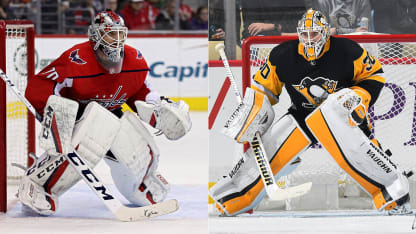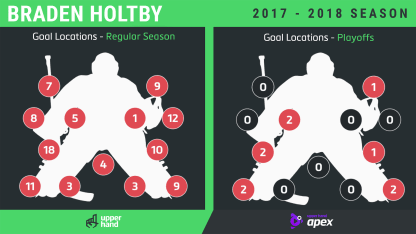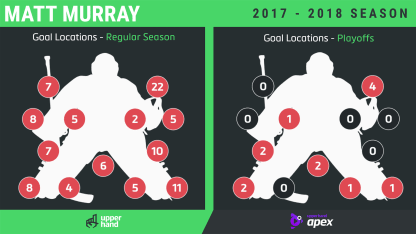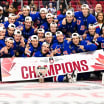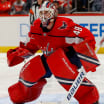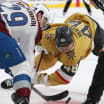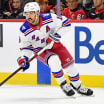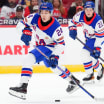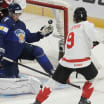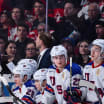Low blocker: Last season, Holtby's highest goal totals were high to the glove side (23 percent) but this year the biggest number was the 18 goals scored low to his blocker side, and his low-glove total (10 percent) exceeded his high-glove total (9 percent). There were occasions when Holtby got caught using a passive one-pad-down save on rushes down the right wing, dropping his right knee and opening up the blocker side, including a Matt Calvert shorthanded rush goal in Game 5. For the most part, Holtby's low-blocker exposure comes from a tendency to keep his shoulders back and torso upright off the release, which limits his ability to reach low shots, leaving him more reliant on shifting his body into these shots targeted low on the blocker side.
Against the grain, on the glove: Holtby wasn't happy getting beat high over a passive glove by Columbus forward Pierre Luc-Dubois from the top of the face-off circle in Game 3, but his combined 21 mid- and high-glove goals in the regular season were below the average (24.6 percent) for goals tracked in breaking down playoff starting goalies for this project during the past two seasons. His 29 percent of goals scored against the grain, when the puck or play is moving one way and is then shot or pulled back in the other direction, were almost double the 14.8 percent average. Twelve of them came mid- or high-glove, further emphasizing the importance of getting him moving side to side before shooting at his glove.
Along the ice: Goals along the ice are often associated with tap-ins after cross-crease passes, but Holtby has additional exposure on low shots through screens (22 percent of his goals) and deflections (18 percent) because his narrow-butterfly stance reduces low coverage. It is tied to his upright torso, which also creates a slight delay in recovery movements, with the lead pad pulling back and out of the way before he pushes, leaving him susceptible to quick, low shots on rebounds. It was on display on Calvert's rebound goal in overtime of Game 2.
